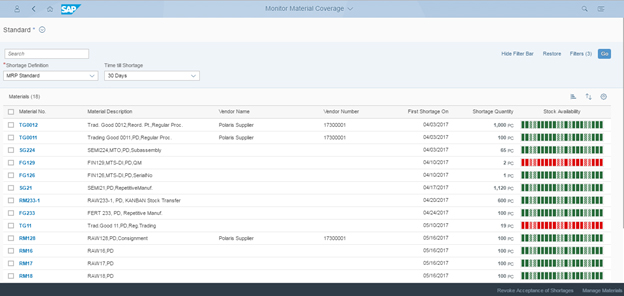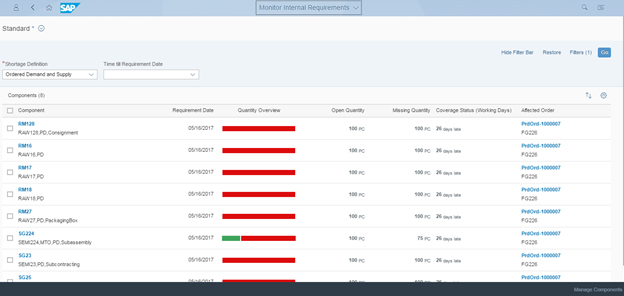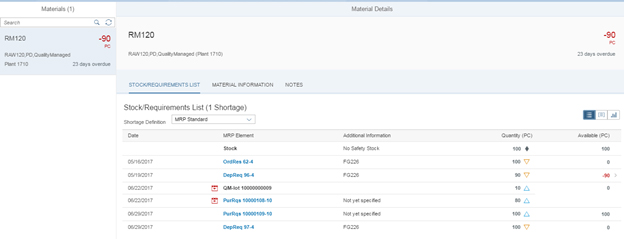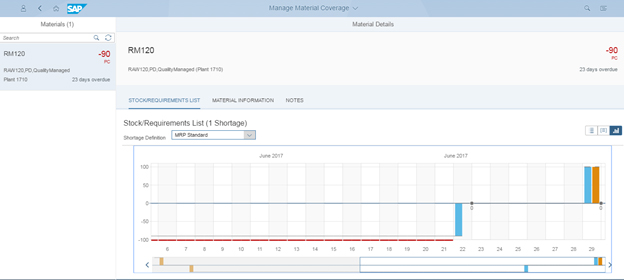As the world is moving rapidly in terms of technological advances, some of the factors like connectivity, faster response time are needed for a successful manufacturing business. It is also necessary to have the accurate & real-time information available for the planner. There are different KPI’s used for manufacturing units. The information flow both internal, as well as external, should be optimized by the planner to achieve some of the KPI’s. The fundamental role of a planner is to check the inventory turnover, the material in hand, cycle time, no stock out positions.
With the traditional MRP, the planners were not able to execute the MRP at regular intervals and hence, creating a bottleneck. This is a peculiar case for the manufacturing units with a large amount of data to be processed. This resulted in high inventory volumes, missing parts and finally resulting in high costs. With the SAP S/4HANA in-memory capabilities the planner will be able to execute the MRP at speed 10X compared to traditional MRP.
In traditional MRP, the system used to make multiple calls to the database server to get the data from 52 different tables. This data is read sequentially, which affects the performance of the system. Using MRP live SAP S/4HANA, the requirements, of the different materials are read in parallel. During MRP run, data from different tables is read and transformed into a common structure ignoring the non-relevant data tables. The calculations related to the shortages, requirements all are done on the database server, creating the planned and purchase requisitions. This capability of the HANA database makes it possible to get rid of the bottleneck.
- Multiple plants can be planned
- Planning a set of materials, components & filtering it based on the person responsible or a material across various plants
- MRP live automatically determines the sequence in which the material is to be planned across several plants
- MRP live is a pre-requisite for the future production planning for PP/DS in SAP S/4HANA
- Production version is compulsory for all the materials produced in-house
- Characteristic-based forecasting is not supported in MRP live.
- Does not write the MRP lists
- MD50 or Make to Order is not optimized
- MD51 is not optimized for Project based planning
- In external procurement case, the option to select “create PR” is not available, so it generates Purchase Requisition based on the purchase key
- Based on the delivery schedules it creates the delivery schedule lines
- MD01N is the transaction code optimized for SAP S/4HANA
Planners are transformed with the new user experience, and it has modified the ways of working. Planners can now focus mainly on the exceptions and situations which require more attention and that include financials. FIORI comes with embedded analytical capabilities which help the planners to take quick decisions. In SAP S/4HANA, the real-time information is displayed from different areas like procurement lead time, stocks availability, lot sizes, manufacturing schedules and sales orders across multiple locations. The system proposes the potential solutions for shortages using solution cards. This solution card gives the information whether to reschedule the purchases, increase the quantity in a purchase order or to utilize stock transfers. The planner can use this information and check all the risks and its impact in real time and take appropriate decision.
With the real-time information and optimization logic in SAP S/4HANA, the planner can get the ideal replenishment strategies and parameters. With this ability of the system to simulate and compare the ways of resolution, the material Planner can compare the effectiveness of an external replenishing compared to a replenishing in-house at one of the sites. Again, all financial implication of the proposed solutions is visible.
- Monitor Material Shortages
- Monitor External requirements
- Monitor Internal requirements
- Check material coverage
- Monitor Material coverages – Net segments
- Display MRP material issues
- Monitor Production Orders
- Monitor Process Orders
- Schedule MRP run





If a customer wants to use both MRP live and traditional, then MD01N is the transaction code that one can use. During the MRP run, the system plans the material according to the low-level codes which in turn is determined by the bill of materials maintained. The system takes first the low-level codes and plans for the materials which are considered for MRP Live and traditional MRP. In the second part, it checks for the materials with issues like which cannot be planned by MRP live. Once the first level codes are planned, then it goes for the next lower level codes. There is a report which can be used to force the material to be planned by traditional MRP.
- Reducing services & cost involved for support by taking proactive decisions especially with ever-changing demand
- With clear visibility across the supply chain reduce annual procurement savings
- Improve on-time delivery performance
- Reduce revenue loss due to stock-outs
- Improve inventory accuracy by considering all inventory data, lead times, and purchase related information in the calculations.
Looking for more information on SAP S/4HANA? Watch on Demand Webinar
Vamsi krishna Solution Architect @ YASH Technologies
















